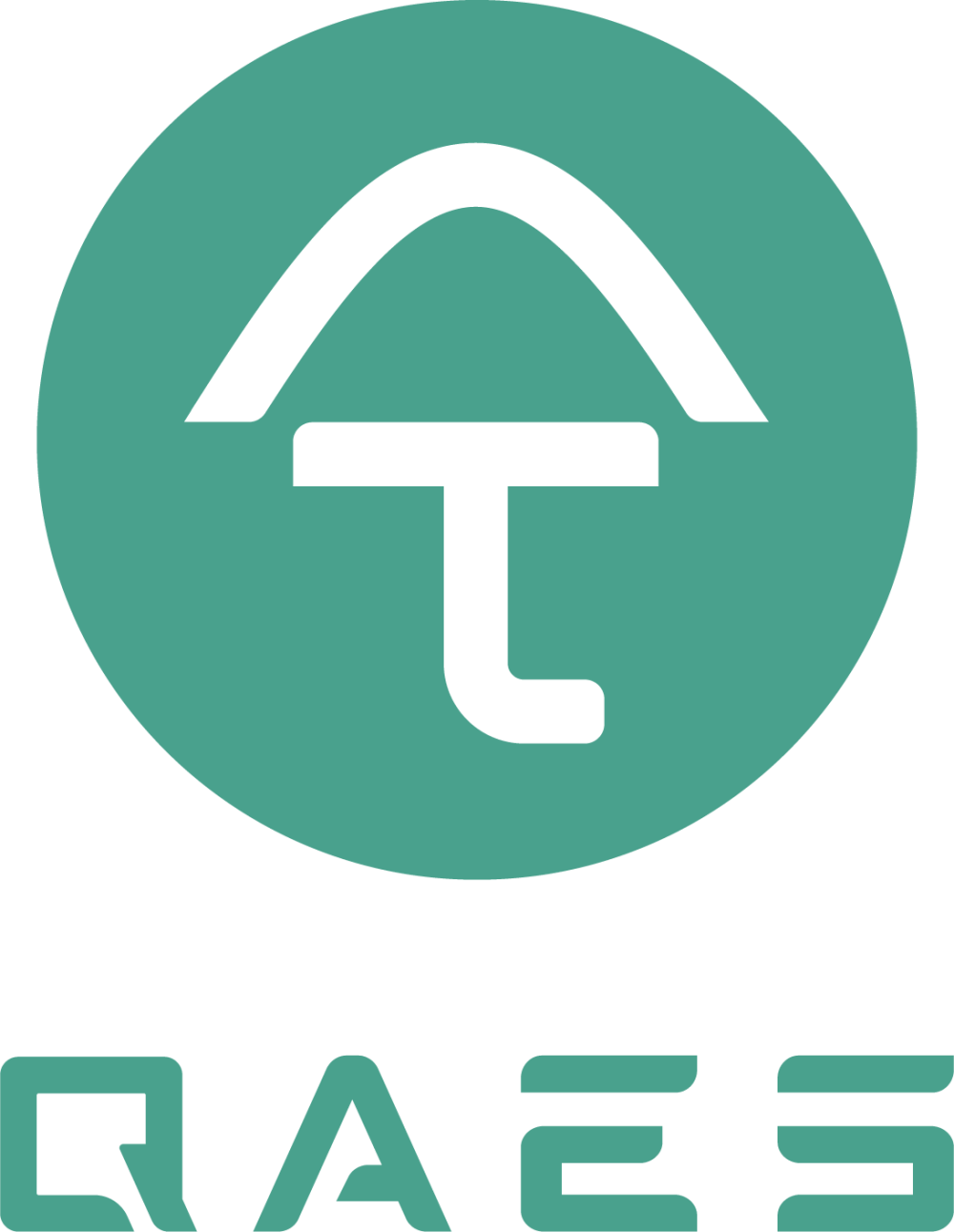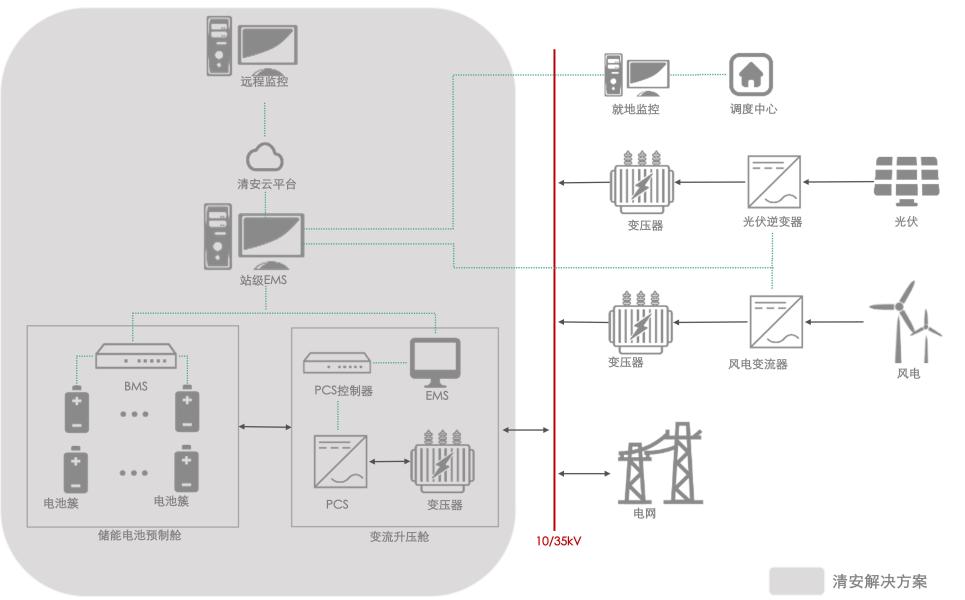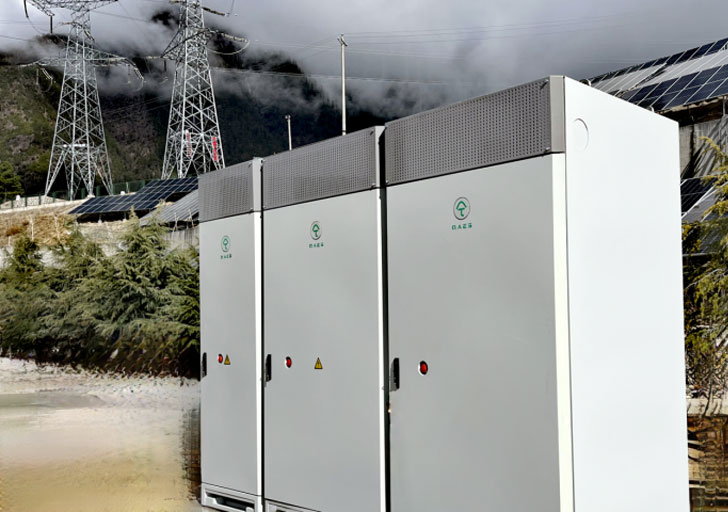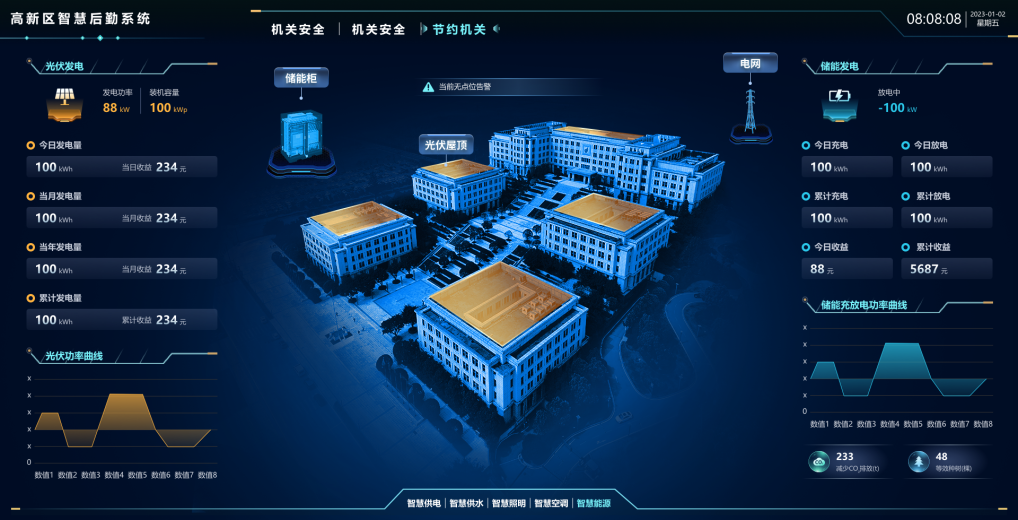


Assisting renewable energy generation in meeting grid-tie requirements and improving the utilization rate of renewable energy.
· Smooth control of renewable energy generation based on the prediction of power station output and energy storage charging/discharging scheduling
· Reducing instantaneous power changes to minimize the impact on the grid
· Smooth output fluctuations, providing reliable capacity support
Renewable energy generation, represented by wind and solar, has characteristics of intermittency, fluctuations, and unpredictability. Massive centralized access will thus lead to a large amount of wind and light waste and stability issues for the grid. Auxiliary new energy grid-tie solutions are suitable for new wind power and PV projects to effectively reduce wind and light waste, improving the quality and reliability of grid power supply.
Reduce wind and light waste and improve the economy;
Enhance the prediction accuracy of new energy generation to improve planning;
Smooth output fluctuations, improving the quality of grid-tied power.


Tibet Nyingchi PV-ESS ProjectOverview:
• Scale/Capacity: 100 kW/200 kWh
• Estimated annual power generation: 64 MWh
Highlights:
• An application case in extreme cold and high altitude environment .
• Intelligent microgrid construction
• Integrated design

Chongqing High-Tech Zone ProjectOverview:
• Scale/Capacity: 100 kW/200 kWh
• Estimated annual power generation: 58 MWh
Highlights:
• Construction of low-carbon park scenarios
• High-safety product design
• Intelligent energy platform